The module Embedded Arts Practice and the Future of Biella, organised by UNIDEE Residency Programs¹ in partnership with Fondazione Zegna and held from 6 to 11 December, was an opportunity for an intense dialogue and exchange between creatives and young people from Biella, who spent a week living immersed in the artistic and natural wonders of the Biellese territory, with a focus on Oasi Zegna. In the course of the residency, the group of participants – five guest artists, nine young experts from the area and three mentors – explored the future potential of the Biella area and, acting as a tourist board of the future, collectively reimagined the territory through the lens of hospitality, proposing new visions for the future of the city. In order to spark reflection and new ideas, the residency invited the participants to consider a series of key questions: “Who will be the tourists of the future? How will we welcome them? What will they do? How will they move around? What will they learn? What will they eat and drink? Who will come? What will it be like for older people and how accessible will it be? How will they communicate this place and their experiences?”. The residency also represented an opportunity for the guest artists and young people from Biella to meet. The activity involved local experts Anna Robino, Arianna Coppa, Matteo Boretto, Valentina Paolini, Chiara Negro, Younis Benmimoune, Ofelia Genipro, Rebecca Chigioni and Samira Kouhail; and artists Camila Aguais, Chiara De Maria, Chiara Sgaramella, Francesco Pavignano and Stefano Volpato; guided by the mentors Bianca Elzenbaumer, Chiara Mura and Carlo Bettinelli.
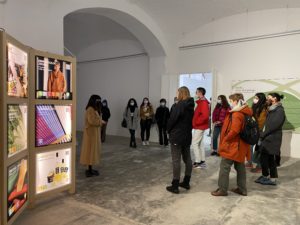
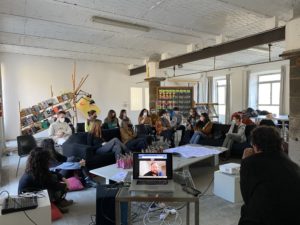
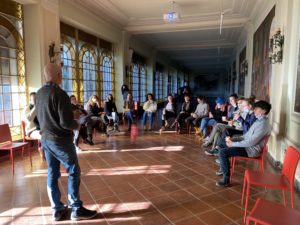
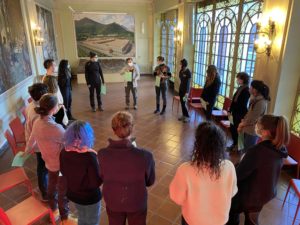
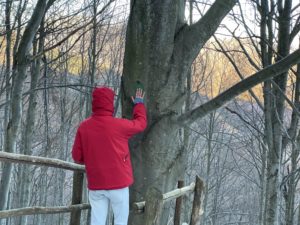
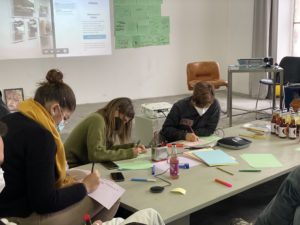
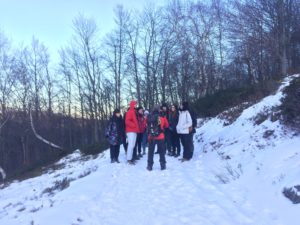
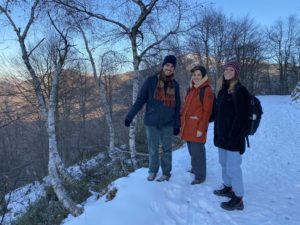
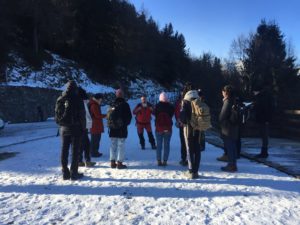
Biella and socially engaged artistic practices
The five artists in residence were able to get to know Biella and the hopes and future of young local people, and share their practices with their peers. To structure this input, other questions were taken as reference: “What is good? What change would you like to see? In your most hopeful moments, what life do you imagine in 40 years time? What resources do we have or can we draw on? How could you make it happen (through and in connection with embedded art practice)? What Biella would we like to see for ourselves and for future generations? What steps can we take to get there? What exists and can be developed? What do we need to invent or create?”. At the same time, the young people from Biella had the opportunity to discuss with mentors and artists about their future career possibilities and to explore some examples of socially engaged artistic practices. In the course of dialogue and networking sessions they were able to discover, for example, what it means to be an artist/curator working in the social field, what the potential career opportunities are and what interdisciplinary and collective approaches are.
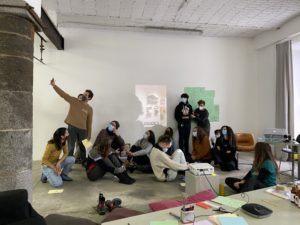
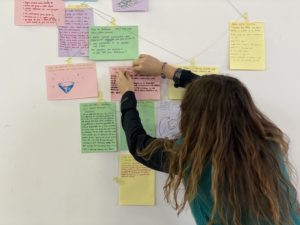
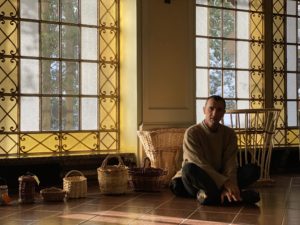
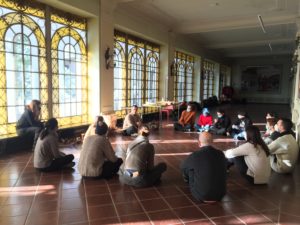
Between visits and experiences
The pivotal moments that shaped the knowledge process were the activities of dialogue and discussion alternating with visits to the area, enriched by the meeting with the staff of Oasi Zegna, who shared their connection with the theme of hospitality and care of the territory. “What is hospitality? It means,” replied Anna Zegna, president of Fondazione Zegna, “receiving people with a smile, sharing what you love, with the idea of a hospitable and sustainable territory, for those who live here and those who visit, where nature and man live in harmony and in full mutual respect. We must not repeat pre-established patterns, but create new models”. The work group in fact collaborated to co-create a result (an exhibition with the presentation of videos, drawings, audio and a self-produced fanzine) that would recount the learning process of the week of residence and present some useful reflections to stimulate new visions of the territory.
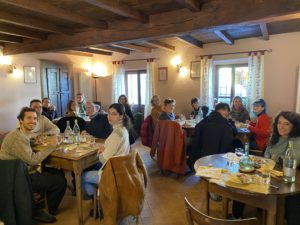
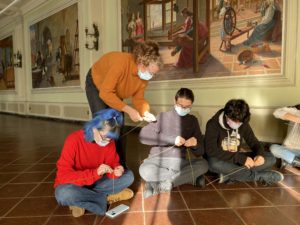

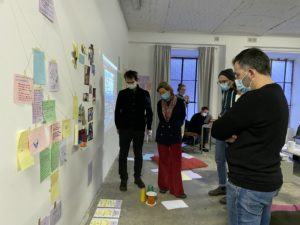
The resources
In order to articulate their artistic and design practice, each participant made use of a series of ad hoc tools: presentations of how guest artists and mentors have developed socially engaged projects; research on the materials of the mapping project Biella Città Arcipelago, presented as part of the event Arte al Centro at Cittadellarte in October 2021; visits and field experiences² to understand the past and present of the territory by delving into the artistic-cultural, environmental and sustainable tourism spheres; sessions in which guest artists and young people shared their views, experiences and works on the theme of hospitality; facilitated group discussions and brainstorming sessions; co-production activities in which the team collectively created a container for their ideas and learning from the week.

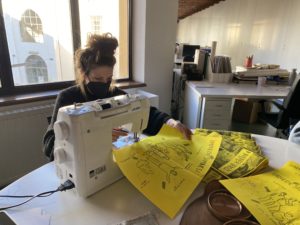

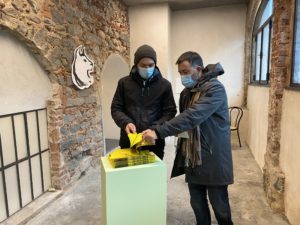
Restitution and results
On Saturday 11 December 2021 the result of the residency week, consisting in a temporary exhibition hosted in the spaces of Biella Città Arcipelago at Cittadellarte, was presented to the public. The event was attended by an audience of about 40 people, including families, teachers and friends of the participants, as well as some representatives from the organisations involved in the project. For the occasion, the participants presented a self-produced instant magazine collecting the material for reflection from the activities of the residency and showed some video and audio clips presenting and narrating the protagonists of the tourist board of the future; visitors were invited to immerse themselves in this journey accompanied by the taste of a drink specially created and produced by Comunità Frizzante. “What Biella and surroundings would we like to see for ourselves and for future generations? What steps can we take to get there? What already exists and what do we need to invent or create? Posing as a tourist board of 2060 for a week in December 2021, we collectively imagined the future of the area through the lens of hospitality,” explained the participants in the module, “our explorations and conversations highlighted the following concepts for a desirable future to take shape: connection, empathy, care, relationship, ties, sharing and community. In our snapshot publication, we mention two aspects that we believe will drive the future of the area. The first – they argued – is a transformation of language: in the future, tourists will be welcomed as co-inhabitants and as such will immerse themselves in processes of co-research and care. The second is the opening up to non-human points of view: we imagine that in the future decisions about the territory will take into account the needs of a variety of components that at the moment remain in the background, such as animals, plants, natural elements like water and air. In fact, we imagined that as the ‘tourist board’ of 2060, our name and composition would also be different. We could call ourselves the ‘Circle of Interdependence’: in addition to the local inhabitants, it will include a whole range of actors whose voices are less heard at the moment”.
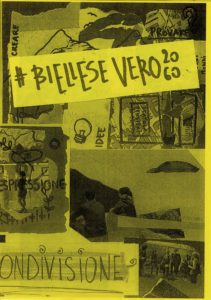
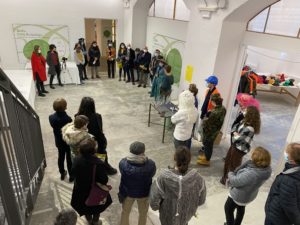
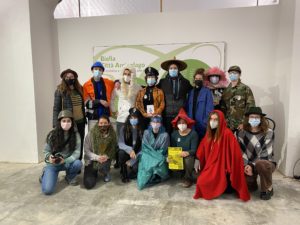
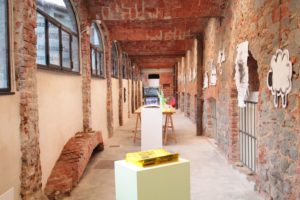
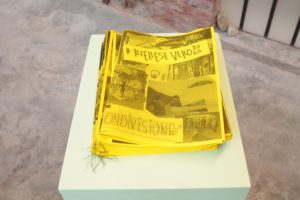
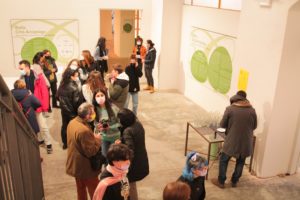
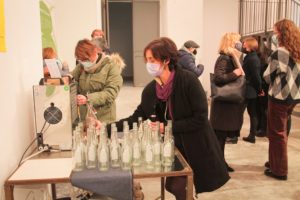
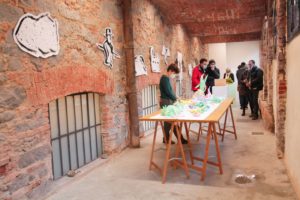

Bianca Elzenbaumer’s comment
“The experience,” said the mentor, “was very positive and I saw enormous potential in having young experts from Biella work with emerging artists: the young people from Biella re-evaluated their territory, got to know horizontal ways of working and had the opportunity to get an idea of what working life as an artist could be like. For the artists, I think it was a wonderful way to try and get involved trying to avoid the gap between artist and non-artist. They were able to test ideas and working methods that I think some of them will take with them into future activities. The fact that all participants and mentors were quite close in age helped a lot in creating a lively, informal and productive environment. The task of imagining a fairly distant future,” she concluded, “was also helpful in not blocking the discussion on the details of feasibility (or non-feasibility) of things that we would not have had the chance to test anyway”.

